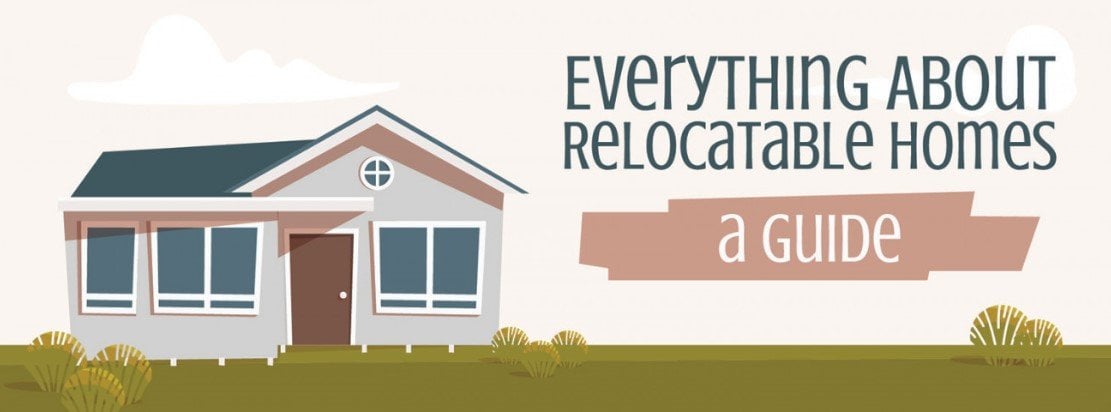With most part of our lives spend earning and planning the retirement, most of the people plan to move into relocatable homes which are affordable and adventurous. These homes come in all shapes and sizes and some of them don’t even look like they are temporary. Every facility that you would have in your permanent brick and mortar house will be available in these homes. It it certainly exciting to have all the facility you can have in your home at the same time getting an opportunity to stay by the sea shore. Some of the countries like Australia and UK offer really good locations for such homes and a lovely neighbourhood who are so likeminded. Surely the whole plan of living this way is amazing and the experience would be worth every minute.
While the whole idea sounds fun, there is a bit of planning and procedures that are needed initially. Right from choosing the location that best suits you, to arranging the home, all need to be done with a pre pan. Apart from these you need to ensure that none of your plans go against the law and order.
Read the basics of planning for such homes and what level of planning you need to when moving into a relocatable home. There is an accompanying infographic by Holidaylife which represents this basic information really well
[REITs]Q3 hedge fund letters, conference, scoops etc
What are Relocatable Homes?
A relocatable home is prefabricated home built in a factory. It has the character of a house and is designed to be moved from one place to another. Typically the relocatable home is placed in a residential park with other relocatable homes, offering an affordable retirement option for retirees.
Some facts
- The United Kingdom has been producing relocatable/prefabricated homes since the 1600’s sending home kits to the USA and Australia.
- If Relocatable homes are placed in residential parks there needs to be signed legal agreement to protect the home and park owner’s interests.
- These houses come in all shapes and sizes and can be customised as per your needs.
- Affordable doesn’t mean cheap and nasty. Relocatable homes come in all range, sizes and quality level.
What are Residential Parks?
A residential park will have one or all of the below features:Own a movable dwelling (also called a manufactured home or relocatable home), and rent the underlying site (land) where your home is located.
- You will also have use of the park’s shared facilities and common areas.
- Each park has its own rules, which cover things such as noise, parking, visitors and pets.
- Parks can have a mix of different dwelling types and rental arrangements. For example, some caravan parks and holiday parks also contain sites for movable dwellings.
- Residential parks are often marketed to people over 55 as an affordable housing option. They sometimes seem similar to retirement villages, but there are important differences.
Key Questions when choosing a relocatable home:
- Will you be allowed to make modifications to your home, such as handrails or ramps, if you need them?
- Will you be allowed to keep a pet if you want to?
- If you plan to have family or friends stay with you sometimes, what are the rules that apply to visitors?
- If your circumstances change and you have to leave the park, can you afford any costs involved? For example, you may need to continue paying rent and other charges until your movable dwelling is sold, even if you are no longer living in it
- If your site agreement includes a deferred management fee or other type of exit fee, how much will this be? Not all parks have these fees, so shop around for the deal that best suits you
- Have you planned how to sell or move your home if the park closes? Although movable dwellings are designed to be transportable, it is often costly to do so.
Benefits of Relocatable Homes
- Affordable: maintenance costs of living in a relocatable home are less than living in a traditional, larger home. With much less to care for, more time is freed up for you to pursue the areas of interest you enjoy.
- Community: The retirement parks or villages offer a sense of community. The parks are much like small towns.
- Social Clubs: Most residential parks offer an arts and crafts club as well as other groups to match people up with others who have similar interests.
- Transparency: No on-going rates and taxes, no exit fees, and no duty stamps are advantages. People may be eligible for commonwealth aid as well. The laws and regulations in place for living in one of these communities are plainly written.
Site Agreements and Legal aspects involved
A site agreement is a rental agreement between residents who own their movable dwelling but rent the underlying land (referred to as ‘site tenants’ in the law), and site owners (usually residential park owners) who rent out such sites.
Holidaylife has created a pictorial form of the basic planning in this interesting graphic below. In order to fulfil your dream of moving to a relocatable home, a thorough research and careful planning is certainly needed. While the basics are covered here, we advise you to take a local solicitor or professionals help and do an in-depth research for yourself. Every country has its own set rules that apply to the concept of a movable house and there is no one rule fit all concepts.






